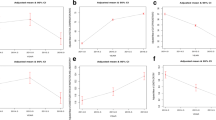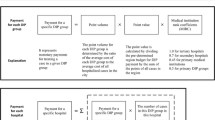Abstract
In the health insurance system of Japan, a fee-for-service system has been applied to individual treatment services since 1958. This system involves a structural problem of causing an increase in examination and drug administration. A flat-fee payment system called DPC was introduced in April 2003 to solve the problems of the fee-for-service system. Based on the data of 2003 and 2004, we assessed the impact of DPC in Japan, and obtained the following conclusions: First, the introduction of DPC in Japan could not decrease the absolute value of medical costs; second, the internal efficiency of the institutions was improved, for example, by reducing the mean length of hospitalizations; third, the DPC-based diagnosis classification is considered to be effective for simplifying the medical fee system within the framework of EBM and for providing patients with information; and fourth, after introduction of the DPC, structural problems remain in the flat-fee payment system, such as examination and treatment of low quality, selection of patients and up coding. Its introduction should thus be performed with sufficient caution. We will make greater efforts to establish a better medical fee system by evaluating these problems.






Similar content being viewed by others
References
Ministry of Health: Labor and Welfare, Japan: 275, 2002.
Hospital Statistics 2004 Ed: Health Forum, An American Hospital Association Company; Chicago, USA, 2004.
Data of 82 DPC hospitals (disk). Ministry of Health, Labor and Welfare, 2005.
Interim report of survey for revision of diagnosis procedure combination. Tokyo: Ministry of Health, Labor and Welfare; December 10, 2003 (in Japanese).
National Institute of Population and Social Security Research: Population projections for Japan 2002. http://www.ipss.go.jp (in Japanese).
Annual Reports on Health and Welfare on 2001: 100–101.
Ryou niki, Japanese medical expenditure. 1995:47–52.
Composition of points per day based on treatment in Special-function hospitals, and hospitals with general wards. June: 47–48, 2000.
Tetsuro, K., Influence and provision for comprehensive insurance system. J. Jpn. Surg. Soc. 106:648–653, 2005.
Ministry of Health, Labor and Welfare. Annual report on health, labor and welfare 2001–2002. Tokyo: Gyosei Corporation.
Acknowledgment
This study was supported by The Hori Information Science Promotion Foundation in Japan.
Author information
Authors and Affiliations
Corresponding author
Rights and permissions
About this article
Cite this article
Wang, K., Li, P., Chen, L. et al. Impact of the Japanese Diagnosis Procedure Combination-based Payment System in Japan. J Med Syst 34, 95–100 (2010). https://doi.org/10.1007/s10916-008-9220-2
Received:
Accepted:
Published:
Issue Date:
DOI: https://doi.org/10.1007/s10916-008-9220-2




